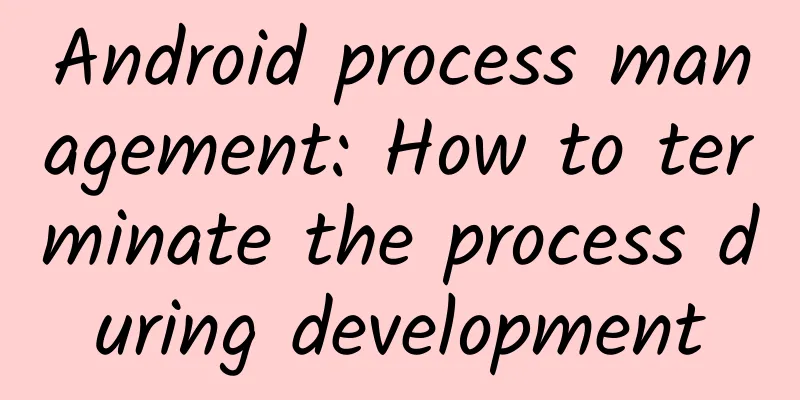Android process management: How to terminate the process during development

|
In Android, directly killing the application process is usually not a recommended practice, but sometimes you may need to kill the corresponding process for certain specific needs (such as debugging or managing applications).
or:
The Android system has its own strategy for managing processes and memory. If there is enough memory, Android will not kill any process at will; but if there is insufficient memory, the process may be killed at any time. When there is enough memory, Android will try to restore the previously killed process. For application developers, you should try to avoid relying on static variables to store important data, but should save the data to files or other persistent storage. At the same time, you also need to pay attention to the reasonable management of the application's memory usage to avoid the process being killed by the system due to problems such as memory leaks. |
>>: LinearLayoutCompat makes your Android linear layout more compatible, flexible and consistent
Recommend
Foreign media: China's electric cars are actually very dirty
According to foreign media reports, China has mad...
Summer night, let us look up at the stars
Summer night, let us look up at the stars China i...
[Highly recommended] Four online tracking services to help you identify application anomalies
【51CTO.com Quick Translation】As we all know, soft...
How to write a new media marketing promotion plan!
What role does new media marketing play? How to s...
Is the TV industry about to change? PPTV's open strategy is implemented, stirring up the smart TV market
According to statistics, the penetration rate of ...
3 routines for short video scripts, novices can also make hot products
Do you think watching short videos is more enjoya...
Battery dilemma: a game that can’t be stopped
At present, China has surpassed the United States...
Xiaomi mobile phone will put pressure on Lei Jun to return to the top of China. Can he achieve his goal?
At the beginning of 2018, Lei Jun's goal of r...
A must-read for those going home for the Spring Festival: WeChat has all the features you need
During the epidemic, go home only if you can. Tod...
CDC reminds you! It’s the peak season for food poisoning, be careful when eating these 3 types of food!
June weather is getting hotter The Dragon Boat Fe...
What impact will the return of iPhone production to the United States have on Chinese mobile phone companies?
Not long ago, the newly elected President of the ...
How lazy were the ancients? Just look at their handwriting.
How lazy were the ancients? Just look at their ha...
China's preliminary plan for manned lunar landing announced! Plan to achieve lunar landing and scientific exploration before 2030
The China Manned Space Engineering Office announc...
In the competition for special drugs for COVID-19, which “players” stand out?
The new coronavirus pandemic is not over yet. In ...
B Station Brand Promotion Guide
Are you thinking about where the future increment...









